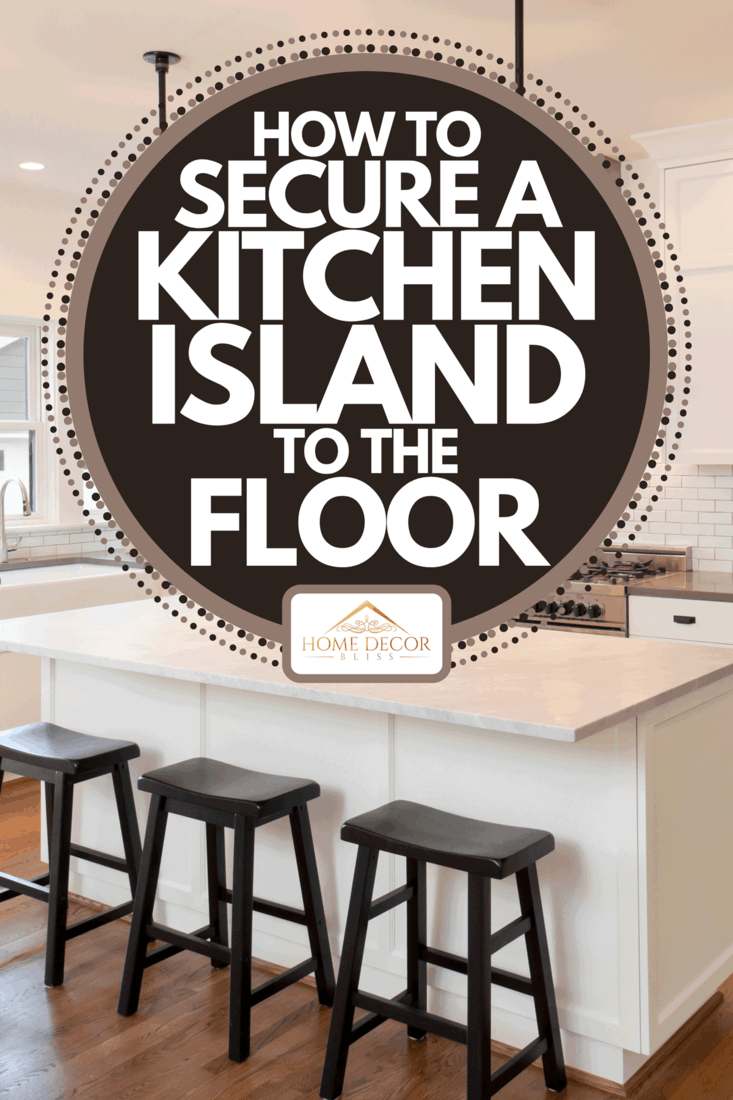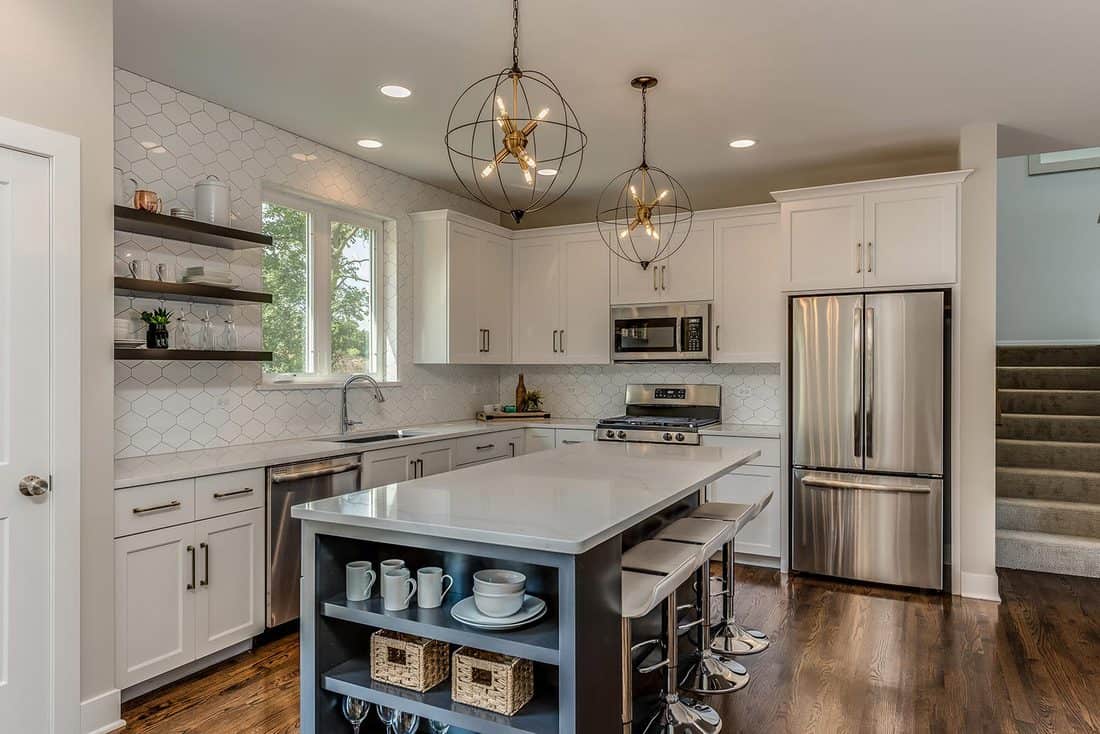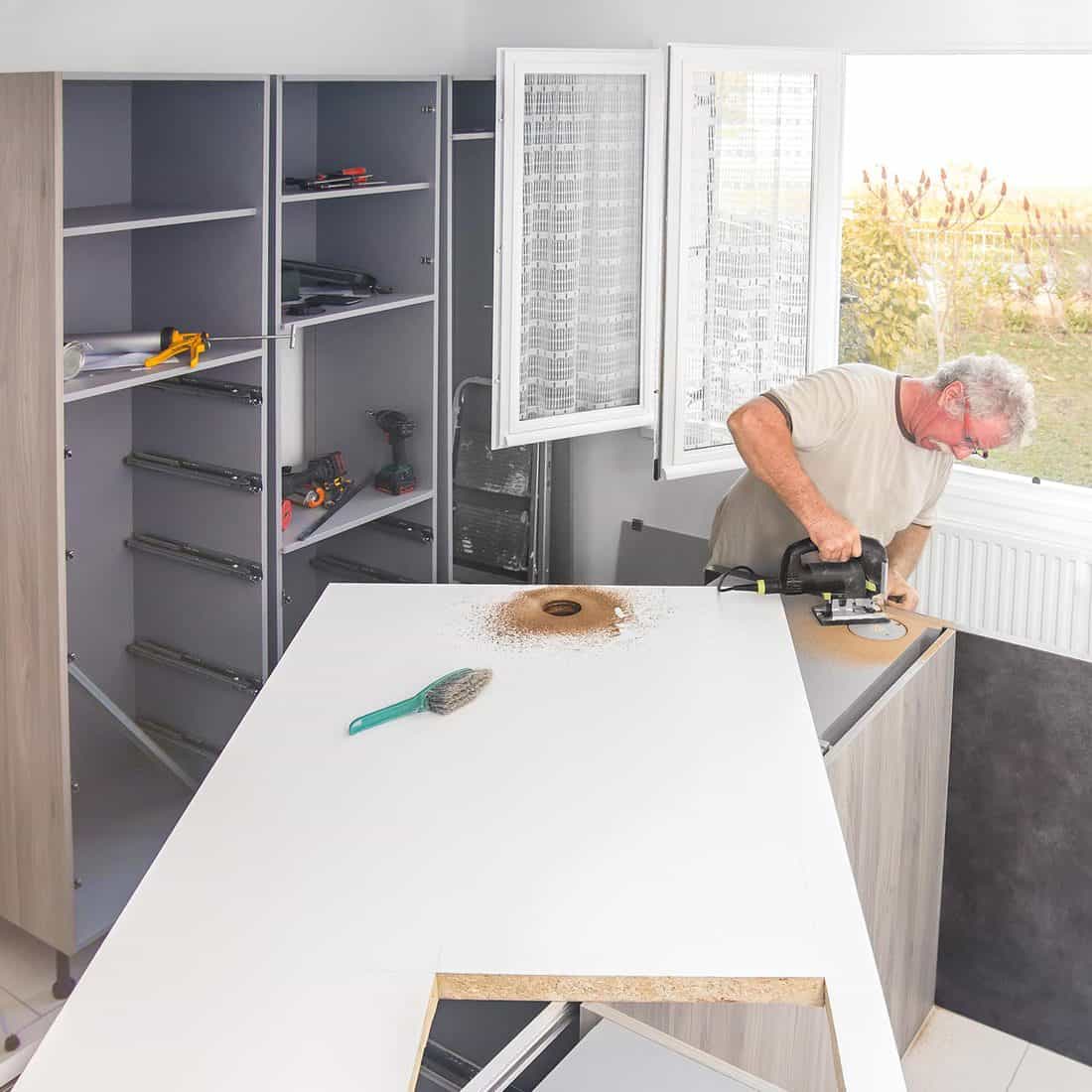When you're renovating a kitchen, the possibilities are endless. You decided it's time to get a kitchen island! But, now we have run into a problem. How do we secure a kitchen island to the floor? You're in luck, as we researched this very topic to help you out!
Generally, there are a few ways to secure a kitchen island to the floor. The first would have to be during renovation. A carpenter would anchor the kitchen island to the subfloor. However, for already established kitchens, you will need to follow a few steps. To secure the kitchen island, you need to:
- First, you want to position the island. You want to leave enough ground for traffic. Outline where your kitchen island will stand.
- Using the outline, you want to measure how far to come in when installing the wooden cleats.
- From here, you will need to screw pilot holes into the cleats and the floor.
- Once you've marked the area, install the wooden cleats.
- Remove any markings after installing the cleats. Place the island over the cleats.
- To add stability, screw the base of the island to the wooden cleats.
Now that you know the general idea of securing a kitchen island, you might have more questions to ask! Does the flooring influence how we will install a kitchen island? Should you call a professional to do the job? If you'd like to find out more, keep reading ahead.

How Is Your Kitchen Island Anchored to the Kitchen Floor?
Before we get to securing another kitchen island, you might have one already in the kitchen! If you want successful results, you might want to find out how your existing kitchen island was anchored to the floor. In any case, since you're renovating the kitchen, you will want to remove the existing kitchen island first before installing the new one.
From here, the plan of action depends on what features are on your kitchen island.

We may include affiliate links and curated AI content to highlight top design styles.
No Features
Removing kitchen islands that hold no features is a simple process. To remove it from the area, you will need to:
- Remove any drawers or loose shelves. You will also want to clear the area out. Meaning, move any utensils or breakable items away from the kitchen island. This way, you avoid harming the floor and yourself.
- Once you've cleared the area, you will need to remove the countertop. Remove any nails that are holding it in place. If it's glued, pry it off the unit. Additionally, you will need to remove anything anchoring the island. As some suggest, in most cases, the island won't be attached to the floor.
- From here, you can begin to take the rest of the kitchen island apart in sections. It might require more effort if there are other supports present.
With Features
Kitchen islands with features like water and electrical hookups require a different process. In this case, you can either do it yourself or call a professional if you're not comfortable doing the work. To remove a kitchen island with wiring and water, you need to:
- For kitchen islands with sinks, shut off the cold and hot water valves. Remove the water lines from the bottom of the faucet.
- If the island is anchored, you will also need to remove the fasteners.
- Using a wrench, remove the drain fitting. Take precautions as water will leak out. So, be ready to clean up the water.
- You can leave the water lines for the new kitchen island. Otherwise, remove them.
Wiring
Lastly, kitchen islands with wiring will most likely follow the same steps as one with water lines. But, you need to be careful as you can accidentally shock yourself if you don't know what you're doing.
- Begin by turning off the electrical circuit. Lock the electrical box.
- Disconnect the wiring from outlets or switches. Pull them out of the boxes.
- You're free to remove the existing kitchen island.
- You can leave the wires if you plan to install outlets and switches on the new island.
How Hard Is It To Install a Kitchen Island?

Now, you might want to consider what route you will take for your kitchen island. As some suggest, there is no such thing as an easy kitchen island installation. Kitchen islands with no wiring or water access can be simple. Though, you want to be precise with your measurements.
In either case, the difficulty of installing a kitchen island depends on how familiar you are with the work. If you're comfortable enough to do it yourself, it can take a few hours to do.
Otherwise, if you plan to include wiring and water pipes, you should hire a professional. This way, you don't end up damaging floors or injuring yourself.
How To Fix Kitchen Island to Tile Floor

With everything in mind, if you decided to install the island yourself, we'll provide a general guide to anchoring it. We'll first cover how to fix a kitchen island to a tile floor.
First and foremost, you will need the following tools:
- Measuring tape
- Wooden cleats
- Drill with wood and masonry drill bits
- Small finish nails
- Wood or drywall screws
- Adhesive
- Plastic lags
- Marking pencil
Now, let's get to the essential steps:
- Begin by measuring the inside perimeter of the kitchen island. Use the measurements to mark the area on the tile floor.
- Take your wooden cleats and place them within the inside of the marked area.
- Pre-drill holes 8-10 inches apart on the wooden cleat.
- Mark where the holes hit the tile. Use a masonry attachment to make holes in the tiles on the marks.
- Take your plastic lags and place them in the hole on the tile.
- Then, take the wooden cleat and align them with the holes in the tile. Secure the cleats with wood screws.
- To provide additional stability, use construction adhesive. Place a strip of it on the outer edges of the cleats.
- Place the island over the cleats. It should have a snug fit. To finish the process, screw the bottom of the cabinet to the wooden cleats.
It's much easier said than done. There's so much going on. You might feel a bit worried about the potential to mess up one of the steps. So, if you need visual guidance, here's a YouTube video for a demonstration. It's important to note that the video does not follow the step-by-step guide above exactly.
Nevertheless, it does give you a general idea of what to do!
How To Fix Kitchen Island to Concrete Floor
Fixing the kitchen island to a concrete floor takes a similar path to the guideline above! As a quick recap:
- Take the measurements of the kitchen island. Use the measurements to mark the area where you will place the kitchen island.
- Place the wooden cleats on the inside of your measurements on the floor.
- Pre-drill holes in the wood. Next pre-drill holes into the floor. Align the wooden cleats to the floor and secure them using wood screws.
- Place a strip of construction adhesive on the outer edge of the wood. Finally, place the kitchen island over the wooden cleats.
It should follow the same steps as fixing a kitchen island on a tile floor. Though, there are a few adjustments to make because the flooring is different. As some forum users suggest, you might want to consider using liquid nails for better adhesion to bare concrete. This method is an alternative to drilling into the concrete.
Click here to see this adhesive on Amazon.
Drilling
However, if you don't want to use adhesives, drilling into the concrete should be fine. Drilling into concrete with a standard drill will take more physical effort. If you want the best results, you will need to use a hammer drill.
Otherwise, you will have to go through more effort using a standard one. It will face more obstacles. The concrete can quickly dull the drill bits. If you insist on using a rotary drill, you will have to find a way to keep the drill bit cool.
Final Takeaway
Adding a kitchen island can boost the overall flow of your kitchen. Though, adding one can prove to be slightly hard. If you have second thoughts about installing one yourself, get a contractor to do it for you! We hope you found the information above insightful!
Before you go, do you have other kitchen island concerns? Do you need ideas to help decorate your kitchen island? You can get some inspiration by checking out our post here.
Additionally, are you considering other options instead of a kitchen island? You might want to consider a breakfast bar! To see the differences between the two, check out our post here. Until next time!




![Beautiful Kitchen in New Luxury Home with Refrigerator, Oven, Hardwood Floors, Kitchen Island, and Pendant Lights, Is Granite Cheaper Than Quartz? [Which Is Better?]](https://homedecorbliss.com/wp-content/uploads/2022/12/Beautiful-Kitchen-in-New-Luxury-Home-with-Refrigerator-Oven-Hardwood-Floors-Kitchen-Island-and-Pendant-Lights-600x400.jpg)